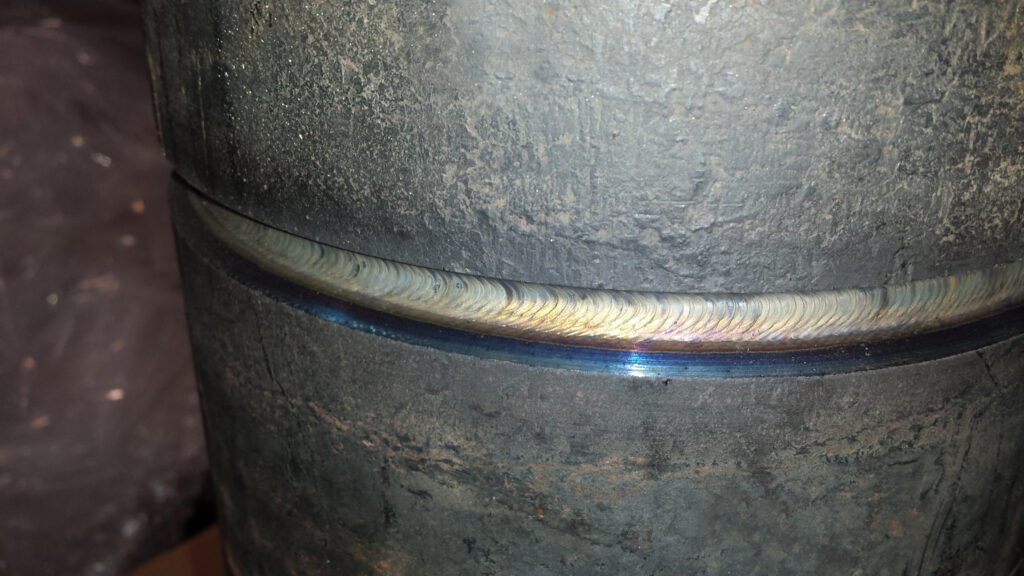
Whenever there is a heat input on the metal, there is an inevitable expansion and contraction. The extent to which this happens is dependent on the intensity of heat, but this basic thermodynamic concept is sure to change the metallic properties during the heating and cooling cycle.
In pipes, distortion and deformation can occur when exposed to a hot working process such as welding. The result – change in alignment and dimensions of the pipe. Welders must, thus, be well aware of the expansion/contraction mechanism when performing pipe-to-pipe or pipe-to-flange welds. It is also important to be well-versed in the welding technologies that produce the least amount of distortion. For instance, welding processes like Gas Tungsten Arc Welding (GTAW).
Cause of Distortion in Welded Pipes
In the many experimental analyses conducted to study pipe welding distortion, temperature has been observed as one of the prime constants. When heat is applied to the metal, it undergoes thermal expansion, and when it cools, there is thermal contraction. The localized heating and cooling at the weld zone leads to differential volumetric change at the micro and macro levels.
- The macro level change deals with the development of residual stress due to discrepancies in the cooling rate at the surface and center of the weld.
- The micro level change deals with the induction of residual stress in metal due to the change in its metallurgical properties (e.g., phase transformation to austenite or martensite).
In the case of residual stress exceeding the elastic limit, the metal exhibits plastic deformation. This leads to distortion and deformation of the metal. In metallic pipe welding, distortion and deformation of this kind can lead to compromise with the pipe dimension and change in the alignment of the pipe. This can have a serious impact on the pressure and velocity of the flow within the pipe. Many times, the issue of leakage can also arise, which can be potentially disastrous.
The solution to the issues of the heating and cooling cycle is the selection of a welding process that offers controlled heating.
Reduce Pipe Welding Distortion With Automated GTAW
When creating a joint along the pipe, the major concern is the retention of the metallic strength after the welding process. Factors including uncontrolled heat input and incorrect pre-weld joint preparation are likely to create problems like cracks, inclusion, and porosity – the defects responsible for weld failure. The process, like automated GTAW, provides a low heat input level and a high degree of heat control to produce a weld that is clean and defect-free.
Furthermore, other advantages of using automated GTAW for pipe welding include:
- Automated processing that enables a continuous weld – there is no frequent need for stopping and restarting the process which reduces localized heating patterns.
- Low levels of heat input that allow the weld pool to cool down as it goes, reducing the intensity of expansion/contraction and residual stress developed.
- The ability to optimize weld parameters enables controlled welding of pipe with any metallurgical properties and thickness.
Controlled heating in each pass and reduced residual stress means the pipe is less likely to distort and create alignment issues.
Achieve High-Quality Pipe Weld With GTAW
Critical pipelines such as the ones used in the oil and gas industry require the weld joint to be of high quality (i.e., it does not fail easily due to mechanical stress). Expansion and contraction is a natural phenomenon that occurs when the metallic pipe is exposed to heat when welding, but with GTAW, the result of this phenomenon can be controlled.
For large or small diameter pipes, the orbital weld heads can provide controlled heat input in each pass while the monitoring system can be installed to look out for any potential discrepancies and optimize the process on-the-fly. AMI has been the provider of a wide range of automated GTAW welding technologies, which you can adapt to ensure quality, efficiency, and productivity in your pipe welding application.
Arc Machines, Inc is a leading provider of automated GTAW technologies. Our auto weld heads and monitoring systems offer precision control essential for reducing pipe welding distortion when GTAW welding. For inquiries regarding products, contact sales@arcmachines.com. For service inquiries, contact service@arcmachines.com. To develop a custom solution, contact us to arrange a meeting.





